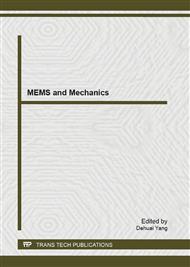p.126
p.132
p.143
p.150
p.157
p.163
p.169
p.173
p.177
Experimental Study of Gas Humidity on the Dielectric Barrier Discharge Influence
Abstract:
Objective: to exam the impact of the gass relative humidity on the dielectric barrier discharge. Method: high voltage AC power supply and wire-cylinder reactors are used to observe the discharge characteristics of empty reactors and reactors with the ceramic filler respectively under different relative humidity circumstances. Results: in the empty reactors,the discharge current decreases with the increase of the gas relative humidity; in the reactors with ceramic filler,with the increase of the gas relative humidity, the discharge current first decreases slowly and then increases immensely. Conclusion: Relative humidity has a significant impact on gas discharge. By comparing the experimental results of the two groups, the conclusion is: when RH< 47%, the discharge current of the empty reactors is greater than that of the reactors with ceramic filler,and when RH > 47%,the result is just the opposite.
Info:
Periodical:
Pages:
157-162
Citation:
Online since:
June 2013
Authors:
Price:
Сopyright:
© 2013 Trans Tech Publications Ltd. All Rights Reserved
Share:
Citation:


